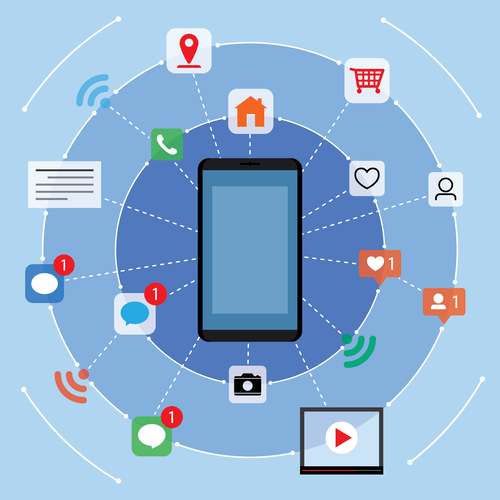This is repeated until the user is satisfied with the function. Then the next function is chosen; it is implemented and demonstrated to the user. Here, the client is served immediately with visible products. Here, the customer cannot view the working model in early increments which is the drawback of the bottom-up approach. This model is more flexible – less costly to change scope and requirements.

The core functionalities development can be achieved as per client and product usage. With LogRocket, you can understand the scope of the issues affecting your product and prioritize the changes that need to be made. LogRocket simplifies workflows by allowing Engineering and Design teams to work from the same data as you, eliminating any confusion about what needs to https://www.globalcloudteam.com/glossary/incremental-development-model/ be done. LogRocket identifies friction points in the user experience so you can make informed decisions about product and design changes that must happen to hit your goals. The ability to go from design to print quickly is important; it encourages a rapid iterative design approach because engineers don’t have to wait long to test a design and push it to failure.
Advantages of Incremental Model
Like, the topmost component of any software is the user interface of that software and it is also the visible part of the software. The operational product is demonstrated to the customer and feedback is taken to develop next increment. During this phase, the developers communicate with the customer and note down all the requirements of the customer. Mostly this model is utilized when all the requirements are of whole product is specific and understood. I was born with love with programming and worked with TCS. One of best global services and consulting company as System Administrator .
Sometimes, the facts can be surprising, but they will lead you to make better decisions down the line. When you’re in the product manager role, managing various threads of information and evaluating customers’ needs, it’s natural to make assumptions. You don’t always have the answers, so you have to make assumptions to make decisions, whether they work out or not. With fast moving processes and changing scope, documentation often takes a backseat. Sometimes, it doesn’t even make sense to document a feature development if it will ultimately change in the near future. Accommodating for changes at the end of each short development cycle helps you respond to change faster and more efficiently.
When is an Incremental Model Used?
After the software is fully tested and is free of errors and defects, the client reviews the test results and approves the deployment. Upon product deployment, the new functionality becomes available to the current end-users of the system. In some cases, product deployment may be divided into several phases based on the company’s business strategy.
- Multiple development cycles take place here, making the life cycle a “multi-waterfall” cycle.
- Thus, it’s a more realistic evaluation approach where the clients can obtain a practical utilisation of the system.
- Let us understand the incremental model with the help of a scenario.
- So, certain processes, which includes specification, development and validation are interleaved, which means that each increment of the system goes through these steps sequentially.
- It’s both easier and cheaper to incorporate these changes for the next increment’s deliverables.
- System is broken down into many mini development projects.
The incremental model should be used when the deadline fixed for the completion of the project seems to be impossible. There can be many reasons for this scenario like it may be the case that there is a lack of staff for completing the project. So, the company can plan early increments with fewer team members. Overall, through an incremental model, the end product can be more accurate and ensure that all the requirements that the client initially stated and later elicited are fulfilled. So, the user gets to see, use, and interact with these features being developed very early in the development cycle, then provide their thoughts, review, and suggestions for further alterations.
What is iterative development?
Generates working software quickly and early during the software life cycle. Today, you can find Casper mattresses in retail stores, and this decision has significantly contributed to the company’s growth. Had it not established feedback loops with its customers, Casper’s sales would have continued to plummet and its technology would not have continued to improve. Ultimately, you have to validate those assumptions and refine your strategy and development based on what you learn through feedback loops after every iteration.

In the middle out approach, a central component is chosen to implement first. The components are divided among the developers and are developed concurrently and independently. At last, all the component are merged to form the final software.
SDLC Incremental Model design phase, applications, advantages and disadvantages
These cycles continue until an optimized version of the product is reached. It is generally easier to test and debug than other methods of software development because relatively smaller changes are made during each iteration. This allows for more targeted and rigorous testing of each element within the overall product.

For example, they only have to focus on the registration system’s operation and interface when they reach that module. This ensures the final product/system is usable and there’s a lesser chance for failure. Essentially, this is what sets it apart from other process models and is the primary characteristic that makes it suitable for the development of a particular software. The system is developed in several increments until the final product is completed. This model involves the approach where multiple modules can be worked on at the same time and the functionality can be achieved.
Capability Maturity Model (CMM) & it’s Levels in Software Engineering
A user acceptance test is one of the ways companies seek feedback from the intended users. Thus, the software can be tested in a pre-production environment, before a real-world production, thereby leading to better results. Consider, we have to deliver a word processor to the customer and customers want the delivery of his product by a date that seems to be impossible. So, in the first release, the delivered increment possess file management, document production, editing like functionalities.
This model is faster and is totally dependent on the workforce a product is having. Divide and conquer mechanism can be done to achieve this. Incremental Resource deployment can be done using this model of development. As this model is a step-by-step module-based development model, this model has certain advantages https://www.globalcloudteam.com/ and disadvantages also that we can see incur. Let us check about some of the Advantages and Disadvantages of the same. Whether it be evolving market trends, shifting product-market fit, or a pivot in the overall business strategy, you need the flexibility to respond to change quickly and efficiently.
Structured Analysis and Structured Design
Plus, the customer is free to suggest changes to the operation of these pages and interface, so the developer can rectify them before proceeding to the next iteration. Thus, this crucial component of the system is checked after every iteration, ensuring it fulfils the customers changing requirements and isn’t subject to any errors. So, this can massively reduce the risk of an overall project failure, especially if there are any changes or additional requirements.